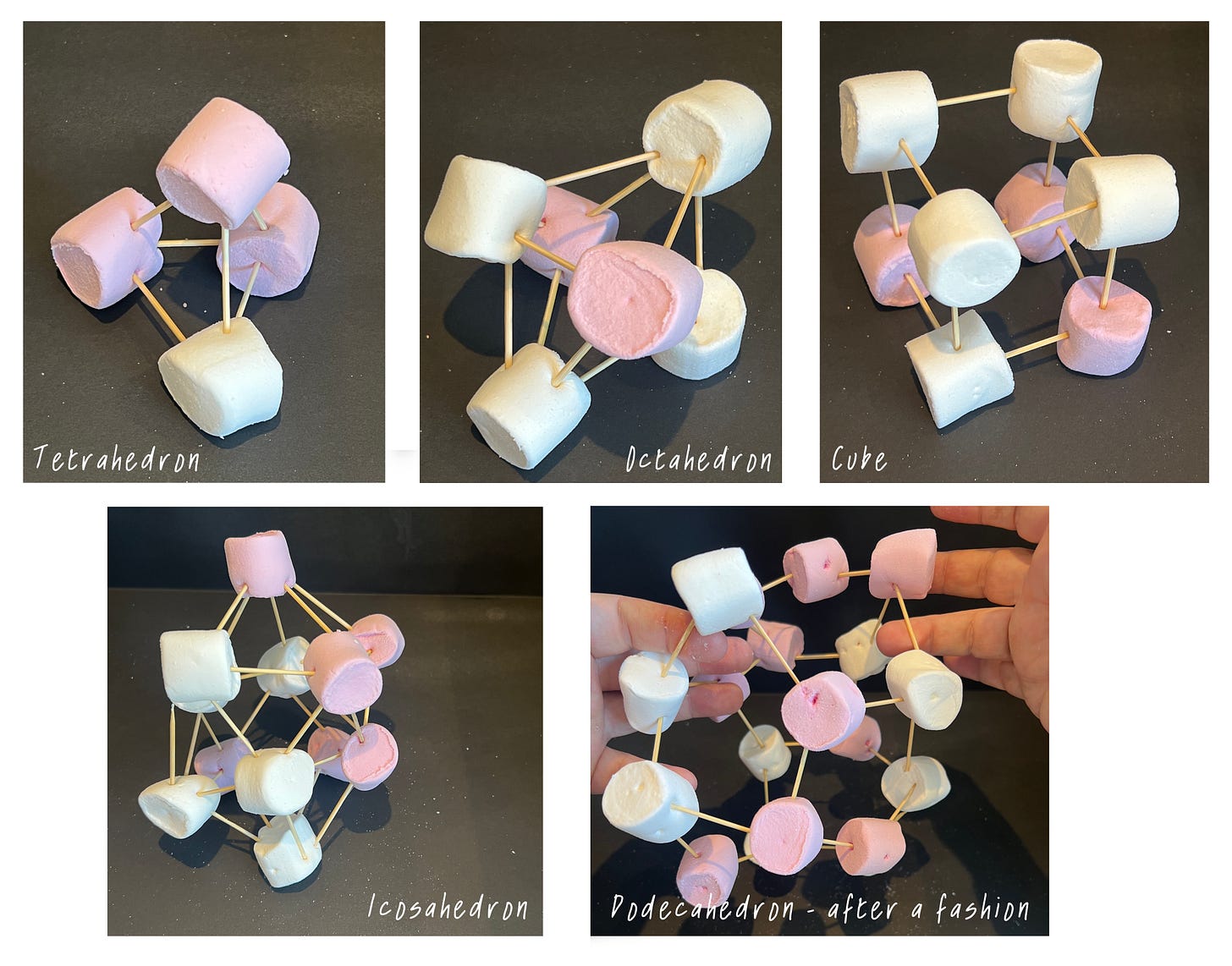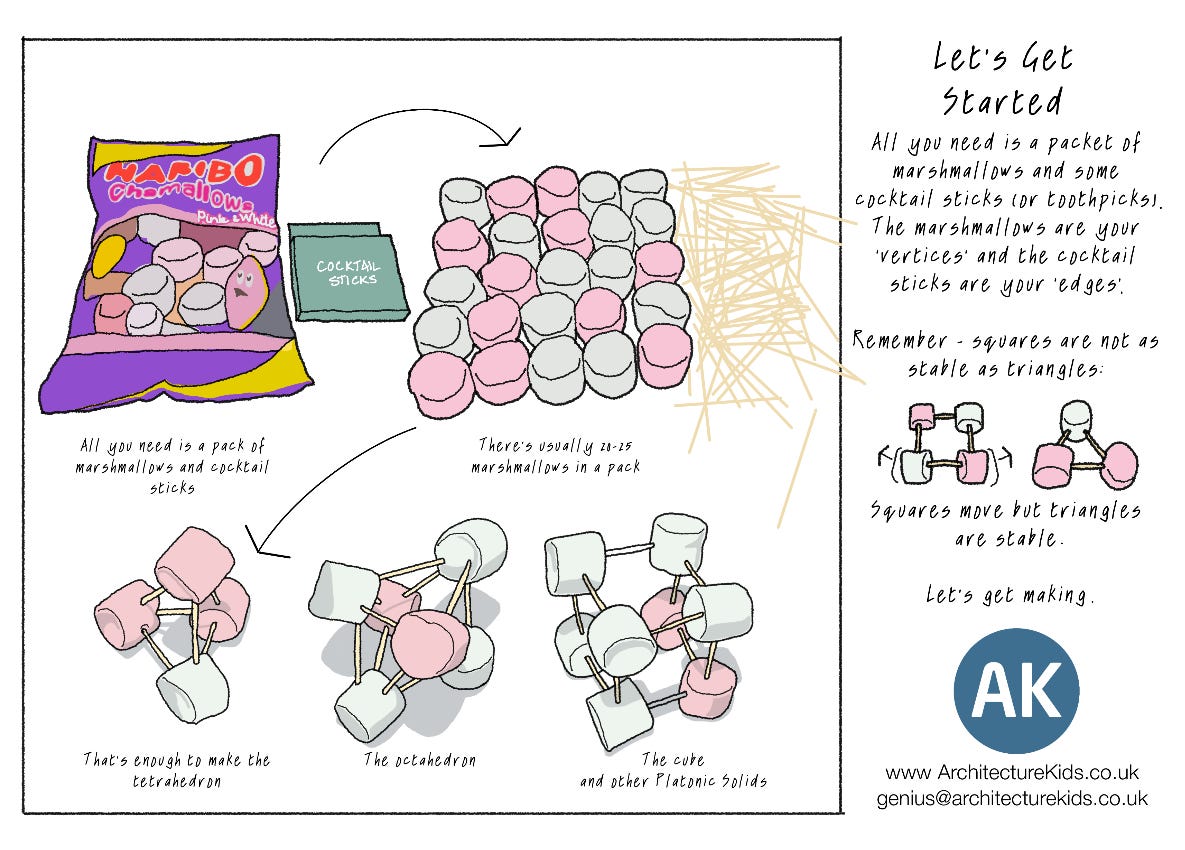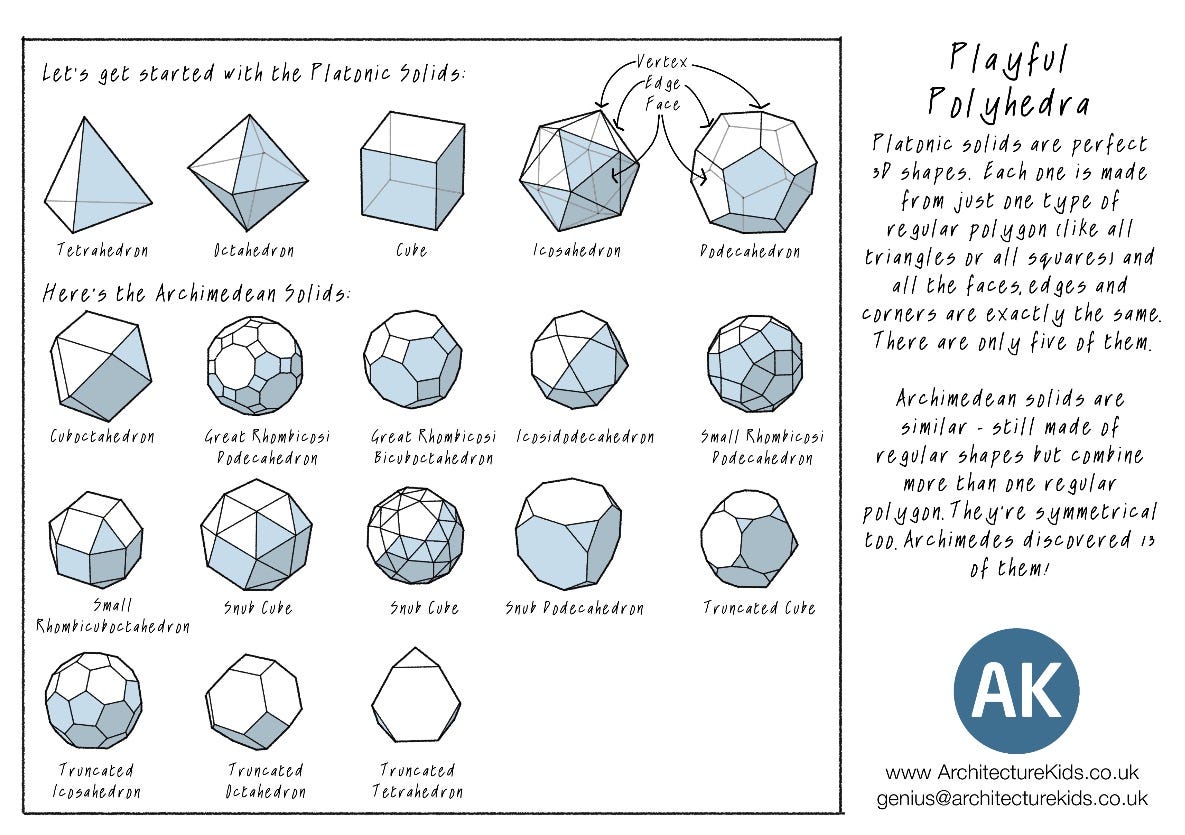Understanding Geometry and Structure
With the Haribo-Hedron Challenge!
Here at Architecture Kids, we’re always looking for fun, hands-on ways to make curriculum subjects more accessible and engaging for children and young people. We do this through creative architectural challenges that link big ideas to everyday materials.
This activity is one of our all-time favourites for exploring both geometry and structure - say hello to the Haribo-Hedron Challenge!
This brilliant, hands-on exercise is fast paced, sticky and full of engaging fun.
🧰 The kit is super simple - all you’ll need is:
One packet of marshmallows
One packet of cocktail sticks (or toothpicks)
Clean hands and a clean table (at least to start with!)
🔺 And here’s how it works:
Marshmallows become the vertices (the corners)
Cocktail sticks are the edges (the straight lines between)
And the gaps in between are the faces
Children explore and build geometric polyhedra using these parts - typically there are around 20-25 marshmallow vertices in a standard packet, just enough for what we need to effectively understand basic 3D geometry!

We usually start with the tetrahedron and work through the five Platonic solids.
The Platonic Solids are special 3D shapes made from identical faces of regular polygons where every edges angle and corner is exactly the same.
As they build, kids quickly discover something important:
👉 Triangles make the strongest structures.
Tetrahedrons and icosahedrons hold their shape well, while cubes are just about manageable. But once you move to faces with more than three sides - squares, pentagons, hexagons - things get wobbly fast. The dodecahedron is a real challenge!
This hands-on making helps students see and feel how geometry works. By holding their own models, they gain a much deeper understanding of 3D forms and structure.
(And a quick word of warning: try not to eat too many vertices - their final model might depend on them!)
🎯 The Surprise Final Challenge…
Once students have experimented with shapes and structures, we like to set the bonus challenge:
Who can build the tallest tower?
It’s hilariously difficult! Marshmallows are soft and start to sag - especially if they’ve been worked a few times or the room is warm. Towers slump under their own weight. Structures tip. Everything sticks to fingers. Fast, focused fun usually follows!
To succeed, students must think fast about:
Distributing weight
Supporting from the base
Managing the centre of gravity
As the tower grows, it becomes dynamic - moving, swaying, slumping… It’s dynamic chaotic creativity that makes the minutes fly by.
👀 What will YOU build?
Let us know how your Haribo-Hedron creations evolve - we’d love to see your work!
We hope you enjoyed this post. If you would like a copy of the work sheets, they are available on the link below:
Keep reading with a 7-day free trial
Subscribe to Architecture Kids to keep reading this post and get 7 days of free access to the full post archives.




